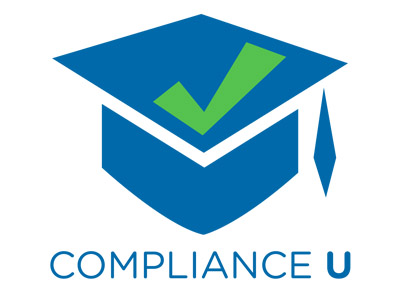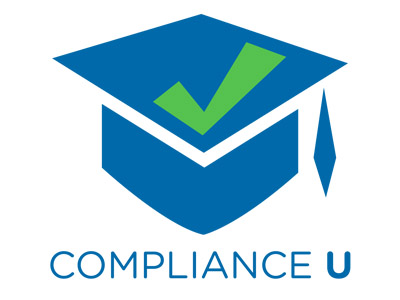 |
Affordable Care Act (ACA) Basics for Business Owners (Corrections) |
0.34 |
This course covers how the Affordable Care Act (ACA) affects small business owners in terms of what standards and regulations they need to know.
This course will also cover reporting requirements for business owners and the responsibilities of the employer mandate. |
 |
Wellness Programs (Corrections) |
0.50 |
This course covers how to create a successful wellness program as well as the factors that can lead to program failure. |
 |
Interviewing Skills: Evaluating and Deciding (Corrections) |
0.67 |
When determining which candidate will be most successful in the job and your organization, you must complete two important steps. First, you should assess each candidate’s experience and past performance, and compare them to the job’s success factors. Then, you should compare candidates with one another to identify the one with the best fit for the job and culture.
In this course you will learn to: identify the types of bias and the steps to evaluate a candidate, and identify several criteria for ranking candidates. |
 |
Train-the-Trainer: Training Methods (Corrections) |
0.25 |
The purpose of this course is to provide the education and tools needed so that participants will be able to effectively deliver safety and health training to their workers. By the end of this course participants will be able to explain the different titles of a teacher, determine positive classroom control measures, examine diversity and stereotypes, describe training delivery methods, analyze questioning types and techniques, demonstrate the use of training aids, define how to empower the adult learner, and illustrate the proper use of assessments and critiques. |
 |
Motivation: Identifying, Planning, and Implementing: Using What You've Learned (Corrections) |
0.50 |
In life, to be a successful, you must have a plan. Napoleon Hill, author of Think and Grow Rich, said, “Create a definite plan for carrying out your desire and begin at once, whether you ready or not, to put this plan into action.” This course has provided you with the information and—we hope—the inspiration to improve your motivational skills and work toward personal success. The final two steps are up to you: You must implement what you have learned and continue to work on improving your skills.
In this course you will learn to: work toward improving your motivational skills by using the 21-day habit and satori, and use resources, including websites and books, to continue working on your motivational skills. |
 |
Customer Service: Using What You've Learned (Corrections) |
0.25 |
This course will provide you with the information and—we hope—the inspiration to improve your customer service skills and work toward personal success. The final two steps are up to you: You must implement what you have learned, and continue to work on improving your skills. |
 |
Combating Sexual Harassment in the Workplace (Spanish) (Corrections) |
0.75 |
En los últimos años, el tema del acoso sexual en el lugar de trabajo se ha convertido en el centro de atención nacional, trayendo consigo una renovada conciencia sobre la naturaleza grave e inaceptable de estas acciones y las graves consecuencias que conllevan.
Según la Ley del Estado de Nueva York (vigente en octubre de 2018), todos los empleadores del estado deben establecer una política de prevención del acoso sexual que incluya capacitación anual de conformidad con la Sección 201-G de la Ley Laboral.
Este curso fue desarrollado por CypherWorx, Inc. en alineación con los materiales de capacitación desarrollados por el Departamento de Trabajo y la División de Derechos Humanos para superar los estándares requeridos por el estado de Nueva York.
A través de este curso, los alumnos: Obtendrán una mejor comprensión de lo que se considera acoso sexual; Aprenda cómo denunciar el acoso sexual; y Obtenga información sobre las opciones de informes externos.
Al completar este curso: Comprenderá mejor lo que se considera acoso sexual; Aprenderá cómo reportar el acoso sexual; Aprenderá sobre las opciones de informes externos. |
 |
Preventing Slips, Trips and Falls: A Training Program for Small Business (Corrections) |
0.67 |
The Preventing Slips, Trips and Falls course focuses on helping small business owners and their employees identify, evaluate and control the hazards in their workplaces that may cause slips, trips and falls. Designed to increase and improve participants' knowledge, skills and access to valuable resources, this course will assist them in establishing systems that can help them prevent slips, trips and falls. Participants will learn how to prevent, recognize, evaluate, and control slip, trip and fall hazards, as well as develop their own learning goals and action plans. |
 |
Protecting Yourself While Responding to Earthquakes (Corrections) |
2.00 |
This course covers the importance of earthquake safety and protecting yourself before, during, and after an earthquake. It also covers how first responders should keep themselves safe when responding to an earthquake scene. |
 |
Suicide Prevention (Corrections) |
1.25 |
This course covers suicide prevention measures and suicide prevention organizations as well as the disparities found in suicide data.
After completing this course, you will be able to:
Distinguish the disparities in suicide statistics
Identify the risk factors that can lead to suicide
Apply techniques to help prevent suicide
Describe the work that suicide prevention programs are doing |
 |
Safe Lifting Practices and Manual Material Handling (Corrections) |
0.75 |
This course covers methods for identifying risk factors related to lifting, carrying, and other manual material-handling tasks in the workplace. It includes how to plan and apply ergonomic improvements to reduce or eliminate those risk factors, thereby avoiding injuries, injury-related expenses, and loss of productivity. It also includes a selection of example ergonomic improvements that learners might choose to implement. |
 |
Advanced Interpersonal Communication: Building Relationships Through Feedback (Instructor Guide) |
0.75 |
Providing feedback is an important element in building a relationship because it closes the circle of communication that links the listener and speaker. Until feedback is given, the people involved in communication are either speakers or listeners. Once a speaker receives feedback, the roles switch, and both parties are equally involved in a conversation.
In this course you will learn to use paraphrasing effectively, and provide positive and constructive feedback in a business setting.
This Instructor's Edition of this course includes notes and suggestions to assist you in presenting the material, whether in an in-person classroom setting or as an instructor-led online or distance-learning course. It also provides you with the answers to questions found in mid-lesson activities, as well as in the quiz that concludes the course. |
 |
Advanced Interpersonal Communication: Colleagues and Subordinates (Instructor Guide) |
0.50 |
Colleagues might include people in your office, team, department, or division. They do not hold a supervisory position over you, nor do you hold a supervisory position over them. Instead, you are all in a similar place on the corporate ladder. Learning how to communicate effectively with your colleagues helps maintain a friendly and effective workplace, and enables you to better promote your ideas and respond to those of others.
In this course you will learn: to identify the guidelines for communicating with colleagues, and how to take appropriate steps to apologize to subordinates; use appropriate tactics to refuse a subordinate’s request; and dismiss a subordinate.
This Instructor's Edition of this course includes notes and suggestions to assist you in presenting the material, whether in an in-person classroom setting or as an instructor-led online or distance-learning course. It also provides you with the answers to questions found in mid-lesson activities, as well as in the quiz that concludes the course. |
 |
Advanced Interpersonal Communication: Communication Styles and Methods (Instructor Guide) |
0.75 |
To be successful in the workplace, you must be able to effectively communicate and cooperate with clients and co-workers. Learning about the four types of communication styles helps a listener understand a speaker’s perspective. It also helps a speaker understand how their communication affects the listener.
In this course you will learn: to identify primary and secondary communication styles, and to communicate using various verbal and nonverbal modes of communication.
This Instructor's Edition of this course includes notes and suggestions to assist you in presenting the material, whether in an in-person classroom setting or as an instructor-led online or distance-learning course. It also provides you with the answers to questions found in mid-lesson activities, as well as in the quiz that concludes the course. |
 |
Advanced Interpersonal Communication: Customers and Vendors (Instructor Guide) |
0.50 |
Your customers include anyone who uses your company or organization to obtain goods and services. Customers might be internal or external. An internal customer is a member of your organization and can be a supervisor, colleague, or subordinate. An external customer is someone from outside your organization. Each customer is of equal importance, regardless of the amount of business that customer provides to your organization. You should provide the same level of quality goods and services all your customers, and all are equally deserving of efficient and effective communication.
In this course you will learn: to respond to customers’ complaints, and to reject a vendor’s contract without rejecting the vendor, and address a complaint to a vendor.
This Instructor's Edition of this course includes notes and suggestions to assist you in presenting the material, whether in an in-person classroom setting or as an instructor-led online or distance-learning course. It also provides you with the answers to questions found in mid-lesson activities, as well as in the quiz that concludes the course. |
 |
Advanced Interpersonal Communication: First Impressions and Building Rapport (Instructor Guide) |
0.67 |
Although it only takes 30 to 45 seconds to formulate a first impression, it often requires four or five additional encounters to change someone's first impression. Many times, once you've made a first impression, you will not have a second opportunity to change that impression. Therefore, it's important to make your best impression on the first try.
In this course you will learn: to identify the elements that influence a first impression, to build rapport, and establish credibility with others, and to build positive relationships.
This Instructor's Edition of this course includes notes and suggestions to assist you in presenting the material, whether in an in-person classroom setting or as an instructor-led online or distance-learning course. It also provides you with the answers to questions found in mid-lesson activities, as well as in the quiz that concludes the course. |
 |
Advanced Interpersonal Communication: Organizational Culture (Instructor Guide) |
1.34 |
An organizational culture is the personality of an organization. This personality is both determined and accepted by the organization’s members. For example, an organization might have a culture that is youthful, energetic, and fast-paced. In this type of culture, decisions are made quickly, and employees are empowered to take action in a wide variety of situations. Another organization might be more straight-laced and policy-oriented. This organization would be much more formal and serious in the way it does business. It is important to recognize and understand the culture of an organization, so that you can determine your fit with the organization.
In this course you will learn: to determine the nature of an organization’s culture, to use the cultural network to your advantage, and identify the characteristics of the roles exhibited in the network, to identify the elements of physical culture that affect interpersonal communication, and to identify the ways in which managers can build a positive culture.
This Instructor's Edition of this course includes notes and suggestions to assist you in presenting the material, whether in an in-person classroom setting or as an instructor-led online or distance-learning course. It also provides you with the answers to questions found in mid-lesson activities, as well as in the quiz that concludes the course. |
 |
Advanced Interpersonal Communication: Supervisors (Instructor Guide) |
0.75 |
When you think of a supervisor, you probably think of your immediate boss. However, in the workplace, most people have several supervisors. Your workplace might be divided into teams, departments or divisions. Within each level, there is a supervisor to whom you are accountable, even if you do not deal with that person on a day-to-day basis. Company executives and board members can also be considered supervisors because they might have the power to make decisions regarding your employment, salary, promotions, and work assignments. It is important to communicate effectively with all of your supervisors to maintain an efficient workplace and to be able to promote your own ideas for improvements.
In this course you will learn to: identify the types of ineffective supervisors and ways to interact with them, and negotiate a raise with a supervisor and offer an effective resignation.
This Instructor's Edition of this course includes notes and suggestions to assist you in presenting the material, whether in an in-person classroom setting or as an instructor-led online or distance-learning course. It also provides you with the answers to questions found in mid-lesson activities, as well as in the quiz that concludes the course. |
 |
Business Ethics: Managerial Ethics (Instructor Guide) |
1.34 |
In this course you will learn to: identify the characteristics of ethical managers, different ethical styles, and the important ethical components of various human resource issues, and ensure ethical behavior in the workplace and address the ethical dilemmas of subordinates. |
 |
Business Ethics: Organizational Ethics (Instructor Guide) |
1.50 |
In this course you will learn to: identify the need for organizational ethics and the types of ethical issues that arise in various functional areas, promote and maintain ethical principles in business, develop a corporate code of ethics and execute an internal audit, identify types of corporate social responsibilities and handle conflicts in responsibilities when they arise. |
 |
Business Ethics: Unethical Behavior (Instructor Guide) |
1.00 |
In this course you will learn to: recognize the sources of unethical behavior, and take action to prevent it, and end unethical behavior by conducting an intervention meeting, and promote ethical behavior in the workplace. |
 |
Business Ethics: Whistle-Blowing (Instructor Guide) |
0.75 |
In this course you will learn to: identify criteria for whistleblowing and the risks associated with it, and identify when and how to blow the whistle. |
 |
Conducting Meetings: Communicating Nonverbally (Instructor Guide) |
0.50 |
Individuals are always sending messages, unconsciously or consciously, through nonverbal communication. When verbal and nonverbal communication contradicts one another, nonverbal cues are usually believed. Therefore, it is important that you understand what different types of nonverbal communication can mean, and how these messages can influence the productivity of your meetings.
Learning Objectives: Identify the different ways nonverbal messages can be sent. Interpret nonverbal communication and identify the steps to improve nonverbal communication.
This Instructor's Edition of this course includes notes and suggestions to assist you in presenting the material, whether in an in-person classroom setting, or as an instructor-led online or distance-learning course. It also provides you with the answers to questions found in mid-lesson activities, as well as in the quiz that concludes the course. |
 |
Conducting Meetings: Communicating As Meeting Leaders (Instructor Guide) |
0.50 |
Clarity is crucial for conducting an efficient and productive meeting. By communicating clearly, you’ll be able to express ideas, overcome barriers to understanding, and specify expectations. Your ability to communicate clearly will facilitate interactions among participants, and minimize confusion and conflict.
In this course you will learn to: identify the ways to communicate clearly in a meeting, and identify communication styles to avoid, and the ways to enhance relationships with participants.
This Instructor's Edition of this course includes notes and suggestions to assist you in presenting the material, whether in an in-person classroom setting, or as an instructor-led online or distance-learning course. It also provides you with the answers to questions found in mid-lesson activities, as well as in the quiz that concludes the course. |
 |
Conducting Meetings: Conflicts, Climates, and Difficult Personalities (Instructor Guide) |
0.50 |
In this course you will learn to: identify the main causes of conflict, the ways to resolve conflict in meetings, and the common difficult personality types in meetings, and identify the characteristics of a positive and negative climate, and the steps to build a positive climate when communicating.
This Instructor's Edition of this course includes notes and suggestions to assist you in presenting the material, whether in an in-person classroom setting, or as an instructor-led online or distance-learning course. It also provides you with the answers to questions found in mid-lesson activities, as well as in the quiz that concludes the course. |


























